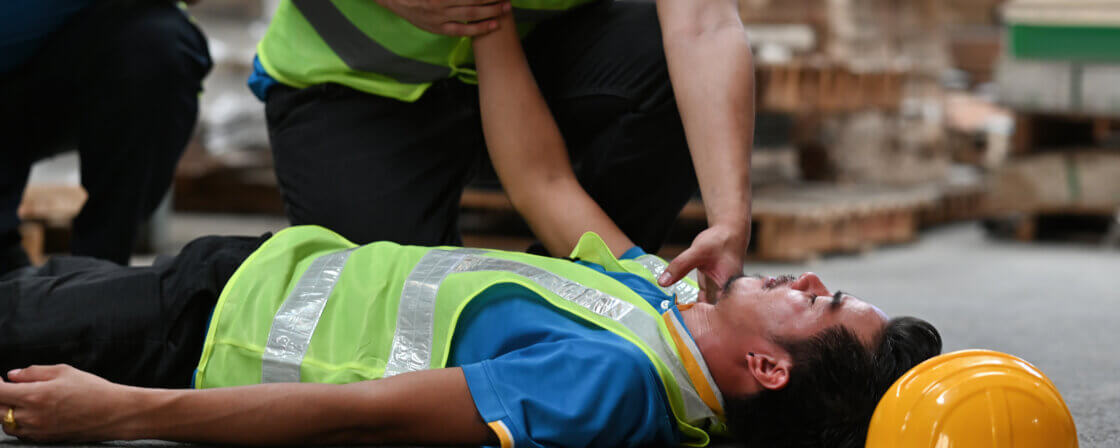What is an accident record and why is it important
An injury record is an official document used to record a work or school injury. It is not a mere formality, but a key basis for investigating the cause of the injury, claiming compensation and assessing any permanent effects. The obligation to keep a record of an accident at work derives from the Labour Code and the Government Regulation on the method of recording accidents.
For example, if an employee breaks his arm while handling a heavy object, the employer must fill in an accident record as soon as possible after the injury is reported. This document contains details of when and where the accident occurred, how it happened, who witnessed it and what the health consequences are.
The record is of vital importance to the employee. Without it, it can be very difficult to prove that the injury happened at work. Both the insurance company and the Czech Social Security Administration often require this document as a condition for recognition of claims for benefits or compensation. The record is also an important piece of evidence for any dispute with the employer.
Are you solving a similar problem?
Have you not received compensation for an accident at work? We can help you
The employer denies the accident? Do you know how to make a record or prove permanent effects? Our attorneys can help you get fair compensation – quickly, online and without the paperwork.
More information
- When you order, you know what you will get and how much it will cost.
- We handle everything online or in person at one of our 6 offices.
- We handle 8 out of 10 requests within 2 working days.
- We have specialists for every field of law.
When and where is the record recorded?
The record of the accident is recorded in the so-called accident book – an internal record of each employer. Recording in the accident book is compulsory for all accidents at work, regardless of whether the employee is on sick leave or not.
For example, if a construction worker injures his ankle in a fall and has to have surgery, the injury is recorded without question. The employer is obliged to keep an accident book either physically (in hard copy) or electronically. The injury must be recorded in the book without undue delay.
In addition to the entry in the accident book, the employer must make a special record of the work injury and send it to the labour inspectorate, the insurance company and the social security administration. This applies to accidents with incapacity for work exceeding three calendar days, with permanent consequences or death. So everything is entered in the accident book, but a separate accident record is only made for the above-mentioned accidents.
What are the time limits for reporting an accident at work?
The time limit for reporting an accident at work starts when the accident occurs. The employee is obliged to report the accident immediately – ideally to his/her immediate supervisor or shift supervisor. Failure to do so can significantly complicate a claim for compensation. However, even retrospective reporting of a work injury is possible if there is evidence (e.g. a medical report or witness statements).
The employer is then obliged to record the injury in the accident book without delay and, if the situation requires it, to complete and send out an accident report. This record must be made without undue delay. In the case of fatal or serious injuries, the record must be made and reported immediately.
Example: an employee injures his back while lifting a heavy load. He comes to work the next day, but the pain worsens and two days later he goes to the doctor and goes on sick leave. If he or she has not reported the injury immediately, he or she should do so as soon as possible and document the work-relatedness, ideally with the help of witnesses.
How to fill in the accident report correctly
Completing a work injury record is not rocket science, but it does require accuracy. The template is mandatorily set out in the annex to the government regulation and contains several important points. Errors in this form can lead to delays or denial of compensation by the insurance company.
The record must include:
- the employee’s identification data,
- the date and time of the accident,
- the exact location and description of the situation in which the injury occurred,
- the consequences of the accident (e.g. fracture of the left forearm),
- names of witnesses,
- preventive measures to avoid recurrence.
It is good practice to include a copy of the medical report with the record. It is advisable to have a pre-populated injury record template ready, which can be easily adapted to the situation.
Tip for article
Tip: Working from home has become very common over the past few years, with some workers de facto no longer returning to the office and others only occasionally being there. But what if something happens to you in your home office? Is it considered an accident at work? Find out in our article.
Specific situations: school injuries, accidents at work on permanent and part-time contracts
The record of an accident does not only concern employees working on a permanent basis, but also persons working on contractual arrangements(FTE and LTTE) and pupils in schools. Each situation has its own specificities.
In the case of a school accident, the school is obliged to record the accident in the accident book and to make a record if the accident requires medical treatment. Teachers should be instructed to report any injury to a school student to the school administration immediately. If, for example, a child breaks an arm in PE, the school must make a note, inform the parents and arrange for a doctor to be taken.
For DPP/DPP, it depends on whether the person is paying for sickness insurance. If so, the procedure is similar to that for a regular employment relationship. If not, some benefits are not payable and any compensation depends purely on the employer’s private insurance.
In practice, consistent record-keeping is often underestimated for temporary workers or trainees. Legally, however, if an injury occurs in the course of work, the employer is required to make a record of the injury, even if the employment relationship is irregular.
What if the employer does not issue an accident record or denies the accident?
Whether through ignorance or deliberate intent, some employers refuse to acknowledge the injury or make an injury record. However, if you have witnesses or evidence (e.g. CCTV footage, medical reports), you have the right to defend yourself.
In this case, we recommend that you get a doctor to confirm that the injury is work-related (e.g. that you came in work clothes and with work equipment), ask for the record to be completed in writing, and contact the regional labour inspectorate, which can fine the employer.
The employee also has the right to seek compensation through the courts if the employer does not recognise the accident. In this case, it is important to have complete documentation and legal representation. The law is on your side, and if the accident actually happened at work, the employer is objectively liable.
Therefore, the absence of an injury record does not mean that you are not entitled to compensation. It just means that it will be a little more complicated and you will need legal support.
Tip for article
Tip: Accidents at work are not uncommon. It is not uncommon for situations to occur on the job that take an employee out of work mode. Learn when you may be entitled to work injury compensation.
Summary
A work injury record is a mandatory document that an employer must produce in the event of any workplace accident with consequences. It is recorded in the accident book, but in more serious cases (e.g. incapacity for more than three days) it is also sent to the labour inspectorate, the insurance company and the Social Security Institution. The record includes a description of the accident, time, witnesses and measures. The deadline for completion is as soon as possible after reporting. It is also possible to report the injury retrospectively. A special regime applies to school accidents and accidents at work on a permanent/permanent basis. Permanent consequences are assessed according to a points system and can be compensated in the hundreds of thousands. The employee is also entitled to sick leave without a cooling-off period and compensation for lost wages. If the employer does not issue a record, the employee can take the matter to the labour inspectorate or the court.
Frequently Asked Questions
Can the injury record be filled in retrospectively?
Yes, it is possible to report an injury back to work if there is evidence – witnesses, a medical report or other proof that the injury occurred at work.
Do I have to see a doctor to create an injury record?
Not necessarily. The employer should record the injury even without medical intervention. But if it is an injury with sequelae, medical documentation is essential for further compensation.
What if the employer doesn't record the injury?
You can contact your local labour inspectorate or a lawyer. As a last resort, you can take legal action.
Who has the right to see the injury record?
The employee, his legal representative, the labour inspectorate, the insurance company and the Social Security Agency. The employer must not conceal the documentation.
Can the injury record be used as evidence in court?
Yes. This is crucial evidence, especially if the employer is resisting paying compensation. That’s why it’s important that it’s written accurately and truthfully.




